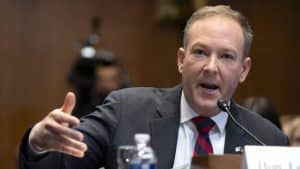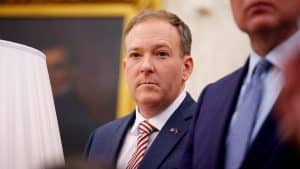The Environmental Protection Agency (EPA) is set for a sweeping reorganization that could reduce its workforce to levels not seen since the 1980s, saving taxpayers hundreds of millions of dollars annually, according to EPA Administrator Lee Zeldin.

“This reorganization will make the agency more efficient by ensuring that science plays a central role in our regulations, while keeping our focus on delivering cleaner air, water, and land for American communities,” Zeldin said in a press release Friday.
Zeldin, who took over as EPA chief earlier this year, said the changes could save the government roughly $300 million a year. The agency currently employs about 15,000 full-time staff, a number he aims to cut to levels “similar to those during President Reagan’s time in office.” In 1984, under Reagan, the EPA employed around 11,400 people, according to Reuters.

Key offices within the agency — including the Office of the Administrator, the Office of Air and Radiation, the Office of Chemical Safety and Pollution Prevention (OCSPP), and the Office of Water — will undergo restructuring.
As part of the shake-up, Zeldin is creating a new Office of Applied Science and Environmental Solutions. This office will focus on essential scientific research and ensure that science directly informs regulatory decisions and technical support to states.

One major goal of the overhaul is to speed up the agency’s chemical and pesticide review processes. According to Zeldin, the OCSPP will hire more than 130 new experts in fields like bioinformatics, information technology, and environmental science to tackle a backlog of over 500 new chemical applications and more than 12,000 pesticide reviews — many of which have languished well beyond their statutory deadlines.
Another new division, the Office of State Air Partnerships, will aim to improve coordination with state, local, and tribal governments on air permitting issues. Zeldin also announced the creation of the Office of Clean Air Programs to streamline regulatory processes and enhance transparency.
Changes to the Office of Water are also in the works, intended to better align policy development with the scientific data that underpins environmental regulations.
Zeldin didn’t shy away from criticizing the current culture at the agency. “When I took office, I inherited a workforce that wasn’t showing up,” he said. “In 2024, the highest in-office attendance rate at EPA headquarters in D.C. was just 37%.” He emphasized that, following President Trump’s inauguration, COVID-era remote work policies were rescinded.

Zeldin also took aim at what he called excessive federal spending. He pointed out that the EPA’s budget under the Biden administration ballooned to $63 billion last year — up from historical levels of $6 billion to $8 billion annually.
“We’re going to rein in this overspending,” he said. “Taxpayers deserve a government that runs efficiently. We’ve already begun reviewing and cutting back on grants, contracts, real estate, travel expenses, and staffing.”
Zeldin said the agency has already canceled over $22 billion in grants and contracts with help from the Department of Oversight and Government Efficiency (DOGE), calling it a win for American taxpayers.


